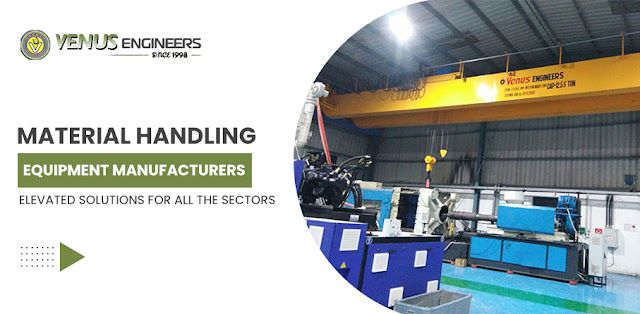Every industry has some form of material handling equipment. It has much to do with the transportation, storage, and control of a wide range of materials that are goods, raw materials, or finished goods. Material handling equipment manufacturers build all sorts of equipment to ease and improve the safety of these activities. Beginning from production areas to storage areas, these implements assist in the completion of various tasks in the shortest time possible.
Classification of Material Handling Equipment.
There are four common classifications of material handling equipment:
1.Equipment for Storage and Handling.
This covers the likes of shelves, containers, and drawer units. These facilitators help to keep materials properly spaced and aligned, and in most cases, these are found in warehouses and factories.
2. Equipment for Bulk Material Handling.
These are resources that are used to transport or store graceless materials in bulk, such as gapped bended or flat belt conveyors and bucket elevators. These make it easier to transport such materials in a brisk manner.
3.
Industrial Trucks.
These are trucks such as forklifts, pallet trucks, and hand trolleys that can lift and haul loads over short distances. Such machines are mainly found in factories and warehouses to facilitate the transport of materials within the stores.
4.Engineered Systems.
These are systems like robotics and conveyor systems that have a pre-defined purpose. They enhance efficiency in industries by performing tasks that are likely to be committed with human errors.
Why Custom Solutions Are Needed?
The demands for material handling vary across industries. Take, for instance, the construction industry, which will expect high-powered machines to lift and move construction materials, as opposed to the food industry, which will require that its equipment maintain standards of hygiene and preservation of the goods.
Manufacturers of material-handling equipment
designs myriads of tools tailored to meet these particular needs, thus enabling industries to operate effectively and safely.
Equipment Technology in Materials Handling .
It is technology that is the driver of change in the functioning of material handling equipment. There is an improvement in the speed of work, and work is made better by the introduction of smarter machines. Thus, many fields have already adopted automation and robots. Those systems were improved so that some tasks could be done faster and more efficiently. Some apparatus are equipped with monitoring systems and sensors to ensure the job is done properly. Such instruments are beneficial in enhancing the performance of the processes on the job site. One more area deals with the equipment that is environmentally friendly.
Industry Requiring Material Handling Equipment .
Material handling
equipment is employed in numerous industries, including but not limited to the
following:
1.Manufacturing: In factories to transport raw materials and control stock levels.
2.Warehousing and Logistics: For moving and managing the shelves.
3.Retailing: For arranging stocks and moving products within shops and storages.
4.Construction: For carrying and placing weighty items, including but not limited to concrete and iron.
5.Farming: For the processing of grains, seeds, and other products available in bulk. No industry can be without mechanical equipment that meets its specific activities, ensuring the work is done properly and safely.
Conclusion .
The successful running of industries also relies on material handling equipment. Manufacturers and suppliers of material handling equipment offer specialized services that cater for different requirements, thereby assisting industries in effective time management, energy conservation, and enhancing work safety. These instruments enhance the capacity of these industries in the pursuit of their objectives as time goes by. For further details, go to Venusen Engineers.







0 comments:
Thank you for posting your valuable ideas. Your message has been saved and will flash once it is verified.